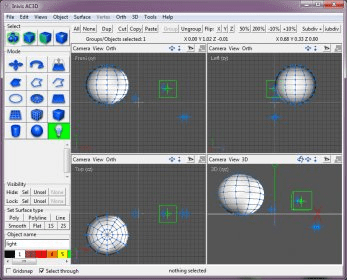

The next block is a large table of vertices. Preamble and texture files in Xplane’s obj file The default texture is sufficient for now. Three texture files are used in Xplane: a default texture, a lighted texture (parts that glow in the dark) and a normal map texture. Texture files are typically in PNG or DDS format. It is widely used in Blender as well as in any 3D modeling software. If you don’t know what a texture file is, you should review the concept elsewhere. The first block contains the name of the texture files used to wrap the object. Xplane’s obj file formatĪs mentioned earlier, this is a plain text file. In my case, I decided it is best to start by learning Xplane’s obj file format and see if it can be manually imported. As far as I know, none of them will preserve the animations and manipulations. There are other 3D programs like AC3D and Sketchup that have import modules for Xplane objects. However, all of the Xplane animations and commands will be lost during this translation. It is relatively easy to write a script to convert Xplane’s obj into wavefront obj, and then read it into Blender. Wavefront is also a 3D file format, and is surprisingly similar to Xplane’s obj file structure. If you google obj file format, the first ones that come up are the wavefront obj. If you are looking to modify an existing airplane in Xplane, this is where you will hit the first major obstacle. It is strictly a Blender-to-Xplane exporter only. Unfortunately, despite what its name might suggest, this plugin does not import Xplane’s objects into Blender. This is a plugin for Blender that allows one to export from Blender to Xplane’s obj format. Examples of 3D objects include altimeter, radios, GPS, yoke, etc. There will be sub-directories as well, and each panel instrument is likely to be in its own directory. These files are under the directory objects/. The acf file references a bunch of other files, but the 3D objects are the ones I will discuss here. Modifying the flight parameters is relatively easy, so I won’t discuss it here.

Changing these parameters will have no effect on the visual representation. This is where you can set engine and propeller information, wing dimensions, fuselage cross sections and a whole lot of information that determine the flying characteristics.

The flight model is in separate menus on Plane Maker. To see the cockpit panel, you will have to uncheck the fuselage, seats and other objects that are in the way, and zoom up real close (use “=” for zooming in). You can go into the Object menu on the left panel and check all of the various objects that make up the airplane’s visual models. When you open this file in Plane Maker, you will be presented with an external view of the airplane. acf is a text file, it is meant to be opened only with Xplane’s Plane Maker. In other words, you can make the airplane look like an elephant, and still make it fly like a glider.Įven though. The 3D objects are for visual effects only, and have no impact on the flying characteristics. One important thing to realize is that the flight model and the visual model are completely decoupled from each other. This file contains all of the aerodynamic definitions as well as the names of the 3D objects that make up the visuals. The root file of each airplane has the extension. They can be opened with an editor like notepad or vim. The nice thing about Xplane is that all of the aircraft-related files are in plain text form.


 0 kommentar(er)
0 kommentar(er)
